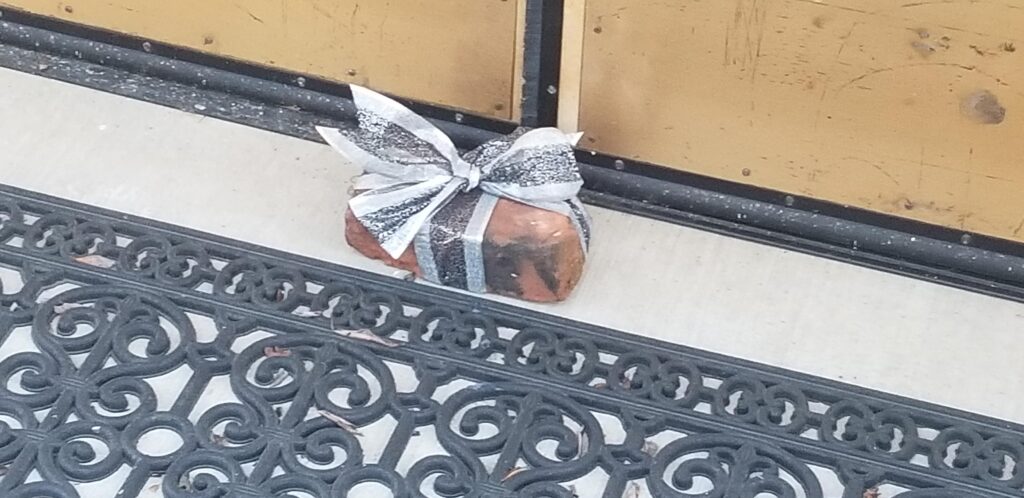Note: I am talking about ancient Hunter gathers not the modern Hunter gathers because they are not a view into the past.
I feel like Hunter gathers are more diverse than we think.
also, people have been eating a lot less red meat than anyone thinks, and for a longer time than anyone thinks.
studies of 10,000 y.o. indigenous European hunter gatherers (WHG) show that their clay pots almost exclusively had residues of fish fats. After the neolithic and Indoeuropean invasions, this transitioned to being mostly dairy fat (still not animal flesh fat)
basically there was always a limited supply of big wild game, for the same reasons that beef farming is land intensive even today--the price of something is a pretty good indicator of its rarity.
Red meat is also a very high risk strategy, as opposed to just existing near a river/lake and being guaranteed food. a vast majority of hunter-gatherers were really "fisher-gatherers" and small-game trappers.
Plus once you start getting agriculture you def dont want to be eating a ton of red meat because thats your fucking farming tool. One of the reasons ancients prized cattle so much was because they were extremely valuable farm equipment and sacrificing one to your god was a big deal.
Most of our preconceived notions about "hunter-gatherers" is just a circular justification for contemporary gender roles (i.e. men are big and strong, they must have always been hunting. Women like pretty colors, they must have always been gathering). I'll get some reading recs from a friend who's an anthropologist later
It doesn't even make sense from a physical standpoint. "big strong man" isn't a hunter, he's a sedentary slow-worker. hunter = lean and long legged
Honestly the most terrifying form of hunting is persistence hunting. It’s like the premise of It Follows but we’re the monster and we hunt in packs
I'm gonna break out the calipers, but even if they weren't persistence hunting, the "durr big strong manly lumberjack" phenotype doesn't make any sense. That body type isn't built for hunting of any sort, whether persistence or sprinting.
persistence hunting would be lean people, like the San currently do
if there was a method similar to what lions use, which is basically a combination of ambush + sprinting, that would probably be mesomorphic people.
the stereotypical masculine alpha male with the huge thick torso would absolutely suck at hunting anything with primitive technology. They don't run fast, they don't run cheap, and they don't run long. However he'd be easily supported by a farmer or fisher community, where food is guaranteed and very sedentary.
Oh I wasn’t really trying to refute what you were saying. Just making word associations in a topic I vaguely understand the basics of lol. That’s interesting though, thank you
I did read some articles about women hunting big game, but it seems they think still men mostly likely did hunting. I really don’t see much of debunking of men side of gender roles where they might of played bigger part of “gathering” role.
The idea that men were the hunters and women were the gatherers is just cultural baggage. Anthropologists generally agree that gender roles are less of a thing in hunter gatherer societies than in agrarian ones. Though hunter gatherers are also very diverse, and people do split things by genders sometimes, so a given culture might have any sort of gendered work division you can imagine.
Gender roles as we know them came with agriculture. Somebody has to spin plant fibers into thread, it's skill-intensive and enormously time consuming, so it makes sense to have a dedicated spinner in your family. It's a job someone can do while nursing or nine months pregnant, so agrarian societies everywhere picked women to do it. And all the stuff we think of as traditionally "women's work" happens to be stuff someone can do while spending almost all their time spinning.
(This post is overly reductive. It's only two paragraphs long, what do you want.)
Well, we don't know all that much, but you'd have to have a huge amount of evidence to even suggest that men exclusively stuck to hunting and women to gathering over hundreds of thousands of years of prehistory. And even then, you'd probably have to start throwing in exceptions (what about trapping small game?).
As with all things, it likely varied across space and time. I wonder if it was more segregated where there was a seasonal tradition of mid to long hunting excursions, especially within a ritualistic context.
In my opinion I feel like Humans tried every type of gender roles possible at least one time in past. I don’t believe a “natural default” of how humans organized.
It's a big mathematical space, but most of the main novel ground is probably already covered.
Across most of Turtle Island you see cultural commonalities of farming being typical women's work and hunting being typical men's work. From the Southwest to the Northeast, land stewardship is matrilineal.
men mostly play pool and take care of children
Sign me the fuck up
Females actually would have had huge advantage when it comes to gathering, they can see far more color then most males can. Meaning they would have been able to spot ripe fruit more easily and tell it apart from poisonous look alikes.
As for gender roles we really don't know much about anything before the neolithic revolution, how many there were and how closely they were tied to genitalia likely varied from tribe to tribe. There does seem to be some evidence that matriarchy may have been predominant because all of the earliest religious icons we have found depict goddesses or animals, with male figures being fairly absent.
Note: early anthropology has always been an interest of mine but never an area of formal study, so you know do your own fact checking.
I know people with Y chromosomes have a higher rate of colour blindness, but social conditioning probably also plays a role.
very likelypossibly a biological thing. Couple of links that both site sources (Natgeo, Smithsonian)I can't find the study right now where they tested it in children and still saw some of the same differences. But yeah I edited my comment cause you're right it's not as definitive as I made it sound.,
Males have the same genes as females, and even in females quadrachromy is very rare; I think it is less that 5% and I am probably erring on the generous side. Colorblindness is more prevalent because the Y chromosome is much reduced and therefore reducing redundancy in that pair, but this is only a tendency not a rule, male still have an X chromosome there and even in females they only have one of the pair active at a time as otherwise there would be an over expression of those genes. As with all things genetics is extremely fuzzy and the more we learn the less and less it seems to be "IF YOU HAVE THE X GENE YOU WILL HAVE Y OUTCOME!!!" genetics is actually starting to look a lot like quantum physics with less concrete binary answers and more conditional probabilities and distributions.
less concrete binary answers and more conditional probabilities and distributions.
I haven't looked into but that sounds 100% true. All the more reason binary genders are pure bullshit.
Ultimately some things are hard boundaries, but those things tend to be very old and conserved in the genome and if they break then you tend to not become an organism; there is a reason like 2/3 of all successful fertilization's end in miscarriage. Some bits gotta work and cant be messed with, but assuming an organism is brought to term, but for other things there is a ton of wiggle room for variation and mutation. Environment also plays a huge role, like you can have a "malfunctioning" gene that works just fine if you have a healthy environment with little stress. Additionally all these variations functionalities are contingent upon a fractal pattern of other biological and environmental factors.
The only bad thing about humans trying to interpret ancient art, and icons is that how to define what gender they think the items are. For example with venus figures how do we define what is "female", or "male". How would we know their gender system is binary?
"Although discussions of Upper Paleolithic figurines are of-ten framed as though all of the figurines are female, manyare quite obviously not female. There are figurines of nudemales, male animals, and possibly male fantastical charac-ters (e.g., the lion-human hybrids from Hohlenstein-Stadel,Geißenkl¨osterle, and Hohle Fels in Germany), but these arenot interpreted within a sexual framework. "
https://www.researchgate.net/publication/265090963_Science_the_Media_and_Interpretations_of_Upper_Paleolithic_Figurines
We don't.
I'd figure even going full stereotypical gender roles you'd have some on a berry hunt since what if you later encounter edible edible plant or fungal life on a standard hunt or fishing trip? You going to let those calories just sit in the sun? No, hunting is a slow act, there's enough time to gather berries or shrooms or whatever so you don't go home without food if the prey evades you. I'd expect hunts to be a lot more varied than expected since there's so much work to be done. Even our proto human ancestors knew more is better when it comes to fulfillment of work capacity. I also suspect gender roles as we think of them is a relatively modern thing.




